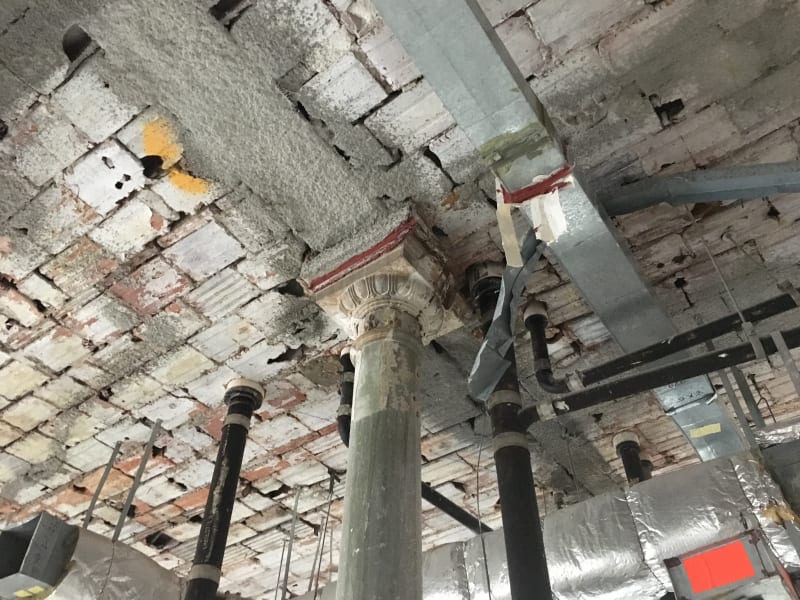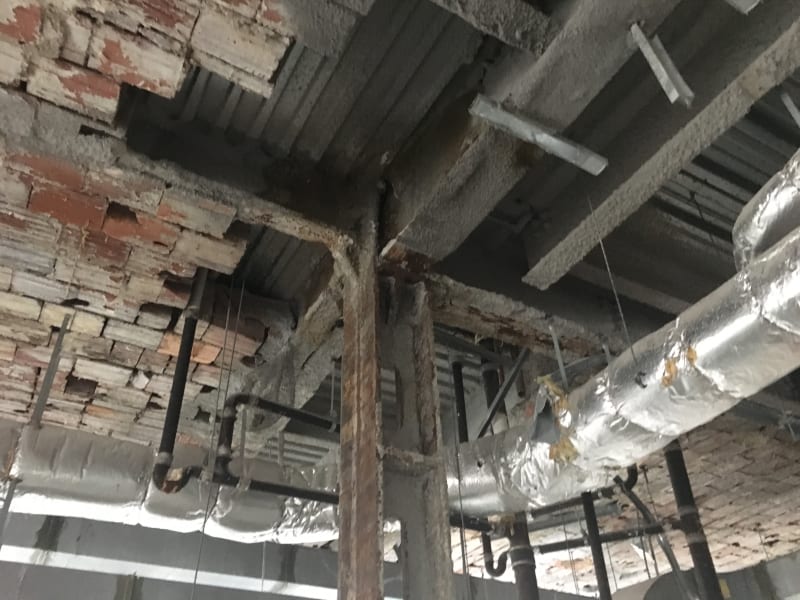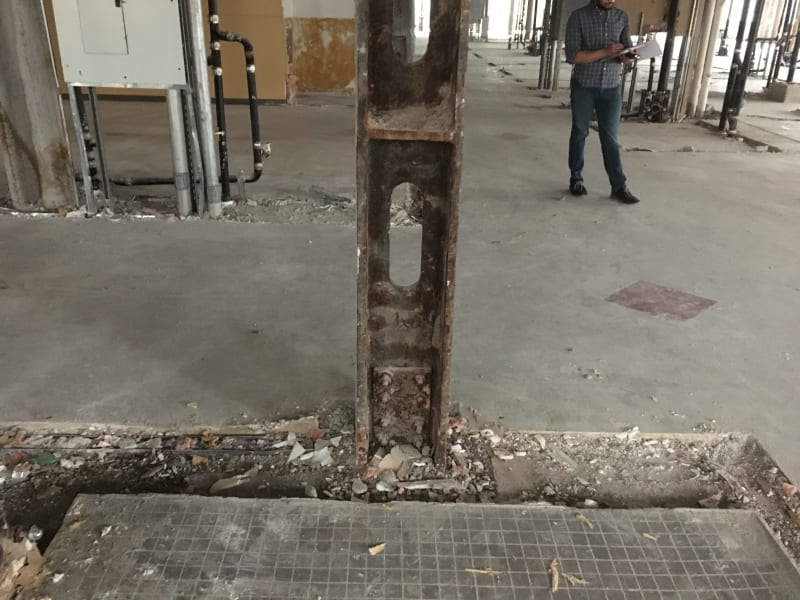Daniel Rsomethingoranother
Structural
Long time lurker, first post. Whenever I'm at work and I'm scrolling through eng-tips hoping to find wisdom I know I'm in trouble! But it has saved me a time or two.
Building dates to approximately 1897. We were able to do coupon tests to the horizontal framing, which is steel. Interior columns to me seem obviously cast iron:

Exterior columns are a different question. Shape I have not seen before, and other folks at work haven't. This is originally an exterior column that now is an interior column due to subsequent renovations, and got exposed:


My instincts tell me this is cast iron due to the weird brackets supporting the beams. But I can't find this sort of shape in any historical reference. Shapes are typically 12" deep, 12" wide, about 1" flange, 0.75" to 1" web. What say you all? Thanks!
Building dates to approximately 1897. We were able to do coupon tests to the horizontal framing, which is steel. Interior columns to me seem obviously cast iron:

Exterior columns are a different question. Shape I have not seen before, and other folks at work haven't. This is originally an exterior column that now is an interior column due to subsequent renovations, and got exposed:


My instincts tell me this is cast iron due to the weird brackets supporting the beams. But I can't find this sort of shape in any historical reference. Shapes are typically 12" deep, 12" wide, about 1" flange, 0.75" to 1" web. What say you all? Thanks!
